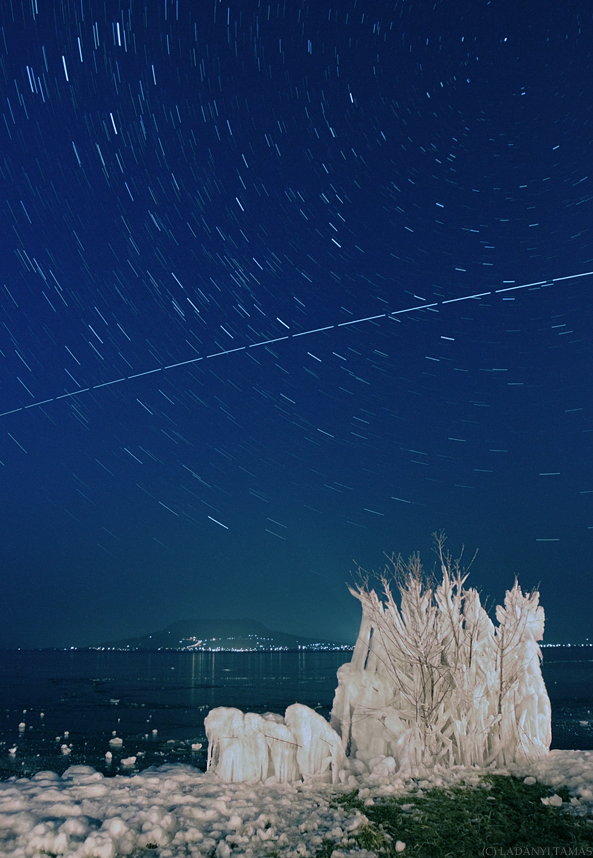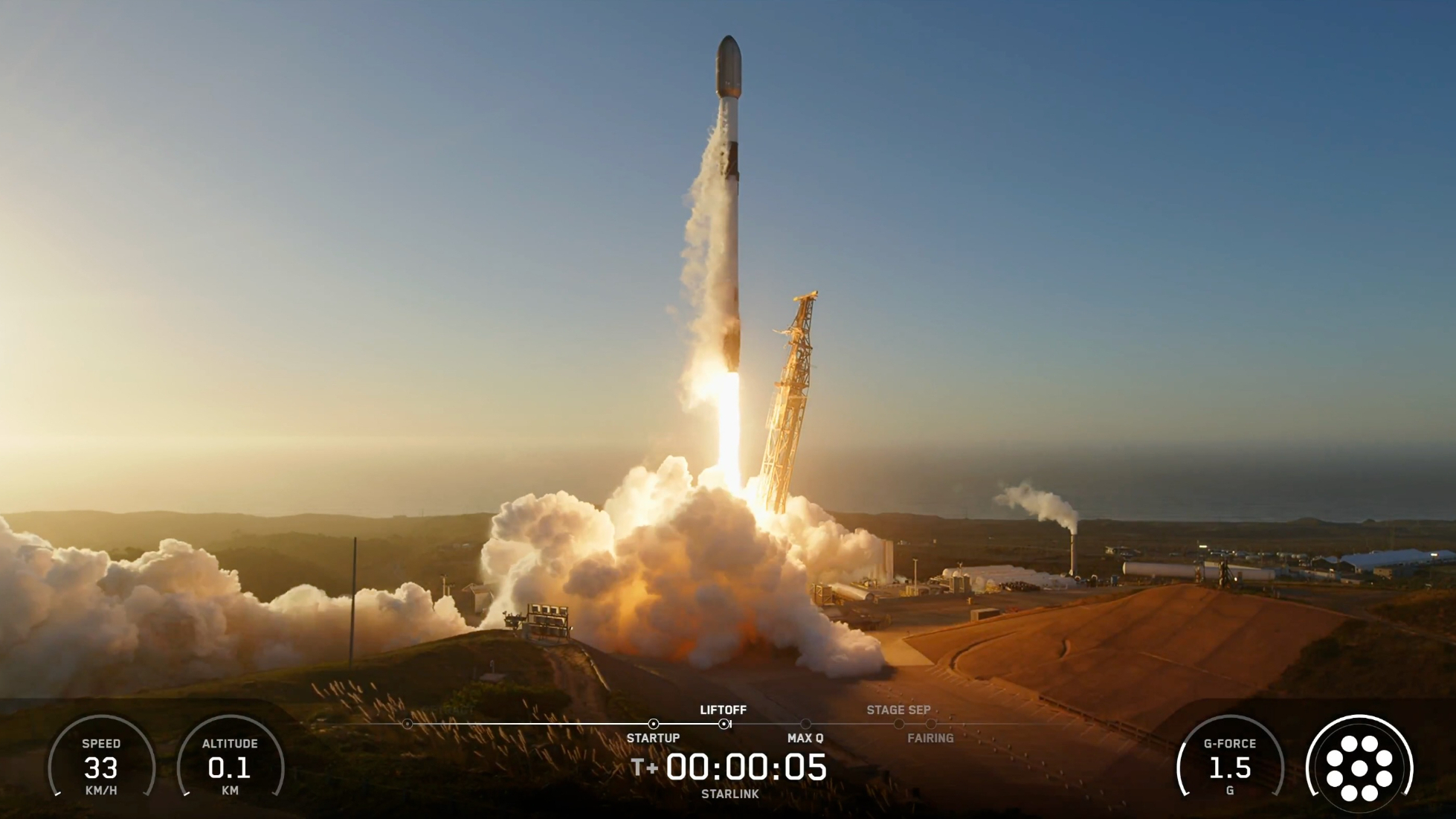Space Station & Shuttle Discovery Streak Across Night Sky in Skywatcher Photo

The International Space Station trails over the sky in this image taken in frozen Lake Batalon, Hungary. Skywatcher Tamas Ladanyi of the The World At Night (TWAN) took this photo over the lake on a frozen night in February 2011 during the final flight of space shuttle Discovery.
The image creates a single trail when Discovery was docked at the space station. Ladanyi took multiple exposures to create enough light for this image. The background in the night sky is star trails caught in the image.
The International Space Station is the largest spacecraft ever built and is currently home to a crew of six astronauts: three Russians, two Americans and one Dutch astronaut. Construction began on the space station in 1998, with major work ending in 2011 when NASA retired its space shuttle fleet after 30 years of service.
Discovery's final mission, called STS-133, was a 13-day mission to deliver supplies, hardware, a new storage room and a humanoid robot called Robonaut 2 to the International Space Station and its residents. [Last Flight of Shuttle Discovery]
The space station can easily be seen in the night sky by the unaided eye by observers who know where to look. NASA and several other websites offer tips on when to see the space station and other spacecraft. They include:
Each of these websites will ask for a zip code or city, and return a list of suggested spotting times. Predictions are computed a few days ahead of time and are usually accurate within a few minutes. However, these predictions can change due to the slow decay of the space station's orbit and periodic reboosts to higher altitudes, so you should check often for updates.
Another great site is this one, which provides real-time satellite tracking and shows you at any given moment during the day or night over what part of the Earth the ISS or shuttle happens to be.
Editor's note: If you have an amazing skywatching photo you'd like to share for a possible story or image gallery, please contact managing editor Tariq Malik at tmalik@space.com.
Follow SPACE.com for the latest in space science and exploration news on Twitter @Spacedotcom and on Facebook.
Breaking space news, the latest updates on rocket launches, skywatching events and more!
Join our Space Forums to keep talking space on the latest missions, night sky and more! And if you have a news tip, correction or comment, let us know at: community@space.com.
Nina Sen is a freelance writer and producer who covered night sky photography and astronomy for Space.com. She began writing and producing content for Space.com in 2011 with a focus on story and image production, as well as amazing space photos captured by NASA telescopes and other missions. Her work also includes coverage of amazing images by astrophotographers that showcase the night sky's beauty.
